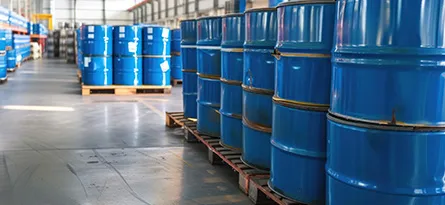Maintenance of any pump is crucial to keep the pump working for its maximum life-span. In this guide, we go through some of the main issues sometimes associated with Dosing Pumps and how to maintain your pump correctly in order to avoid problems.
How do I avoid Cavitation of my Dosing Pump?
Cavitation is the formation of cavities in liquid, or bubbles, which is created by low pressure in the liquid. If these cavities collapse, they can send shockwaves through your pump which would cause damage and unnecessary downtime that can be avoided through simple steps.
To avoid cavitation of your Dosing Pump, you need to consider the following factors:
- Avoid installations with high suction lifts – the pumps have been named accordingly because that is what they do, they are not suckers! The maximum suction lift capabilities vary according to pump type, which needs to be considered when assessing the installation of your pump.
As a general rule of thumb for most Solenoid and Motor-Driven Diaphragm Dosing Pumps, suction heights should be kept to a maximum of 1.5 m. This can be higher when using pumps such as Peristaltic Pumps or LEAP Air-Operated Diaphragm Pumps for dosing.
- Increase the suction pipe ø to reduce the velocity through the suction line. The recommended maximum fluid velocity for fluids up to 100 cPs on Solenoid & Motor Driven Diaphragm Pumps is ~0.7 m/s.
For fluids over 100 cPs, ensure that the pipe lengths are as short as possible with minimal bends and sized to be the same as the pump connections. Below is a table giving a rough guide to recommended nominal pipe øs vs maximum flow rates:
| Maximum Flow Rate (l/hr) | Recommended Nominal Pipe ø (mm) |
| <15 | 6 |
| 15-30 | 10 |
| 30-125 | 16 |
| 125-155 | 20 |
| 155-260 | 25 |
| 260-500 | 32 |
| >500 | 40 |
- Improve the suction conditions of the pump system – utilise a configuration whereby the pump is ideally situated below the fluid level wherever possible.
If the pump needs to be located above the fluid source, keep the suction pipework within the recommended nominal ø, utilise as few bends (swept rather than straight) and fluid accessories as possible and also ensure total suction lengths do not exceed the maximum for the pumps rated max suction lift.
- The velocity of the fluid through the suction pipework can also be reduced by slowing the stoke or operating speed of the pump.
Avoid Overloading or Excessive Delivery Pressures
In order to avoid overloading or excessive delivery pressures, you need to consider that all Positive Displacement Pumps, with the exception of the Air Driven Diaphragm Pump, will deliver pressure onto the line up to the max available from the installed motor power. This can result in over pressurisation of pipework and accessories on the line which can have extremely adverse effects, especially when dosing aggressive chemicals.
It is highly recommended that a pressure relief valve is used to either relieve fluid back to the feed tank, back to the suction of the pump, in the form of a by-pass loop, or round the pump head, in the form of an integral relief valve.
If the product being pumped is solids laden or sticky which can cause issues with spring-loaded pressure relief valves re-seating, then a dual-action pressure switch is recommended which can start and stop the pump according to the pre-set values. This ensures that the pump is activated when required and stopped when faced with a “deadhead” or over-pressurisation on the system.
When utilising an Air Operated Diaphragm Pump, if the system pressure rises higher than the air supply pressure then the pump will stall on the line and will only come back into action once the system pressure drops below that of the air supply pressure.
Tapflo can supply External Pressure Relief Valves and Sensors to assist in protecting your pumps and system from over-pressure, as well as a number of other Accessories for your Pump. Talk to us to discuss your requirements as we are always more than happy to assist in recommending the best way to keep your system working healthily!







